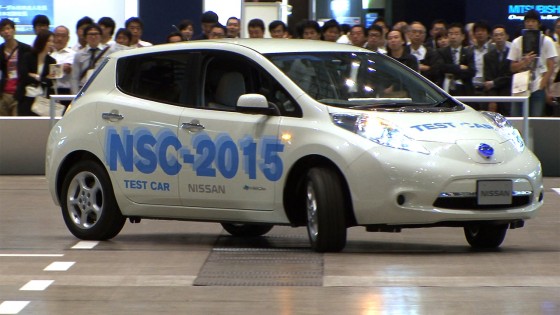
Robohub.org
Nissan NSC-2015 drives and parks automatically in a shopping mall car park

This autonomous driving system, developed by Nissan, can automatically drive and park your car in a shopping center parking lot.
The EV used in this demo, the NSC-2015, contains technology for recognizing the environment around the car using all-round cameras, and a remote monitoring system using 4G communication. When the driver gets out at the entrance to a parking lot, they can use a smartphone to instruct the car to park automatically. Then, the car automatically drives to the parking area, finds a space, and parks.
“In the case of a shopping center, it’s said that people wait, on average, ten minutes to get into the parking lot. We’re giving this demonstration of an automatic parking system to show how things could be made a bit more convenient in such time-consuming, stressful situations.”
To retrieve the car from the parking lot, the driver can summon it using a smartphone. The car detects the driver’s position, and drives there automatically.
“As this is an indoor demo, we can’t use GPS. The system is receiving parking lot information from the smartphone via the cloud. When the car actually drives, it will recognize white lines or roads using its cameras, and find an empty space in the parking lot.”
The remote monitoring system can also function as a security camera. So if the car’s cameras detect suspicious movement nearby, it can notify the driver’s smartphone automatically.
“Technologically, we’ve established various aspects of this system. Overall, though, we think it’ll take some time to become practical. We’ve called the car the NSC-2015 to signify that we think such vehicles may be achieved within 2-3 years. We think this is a technology of the fairly near future.”
“Currently, non-contact charging systems are technically possible, and we think they’ll be used in cars in the near future. To utilize them, parking must be done precisely, so if a person’s driving, it may take several attempts to get the car on the plate. If this system can be used to park in one go, we think progress may be made with non-contact charging. So, we think this system could lead to the implementation of a variety of technologies.”
tags: Autonomous Cars, driverless cars




